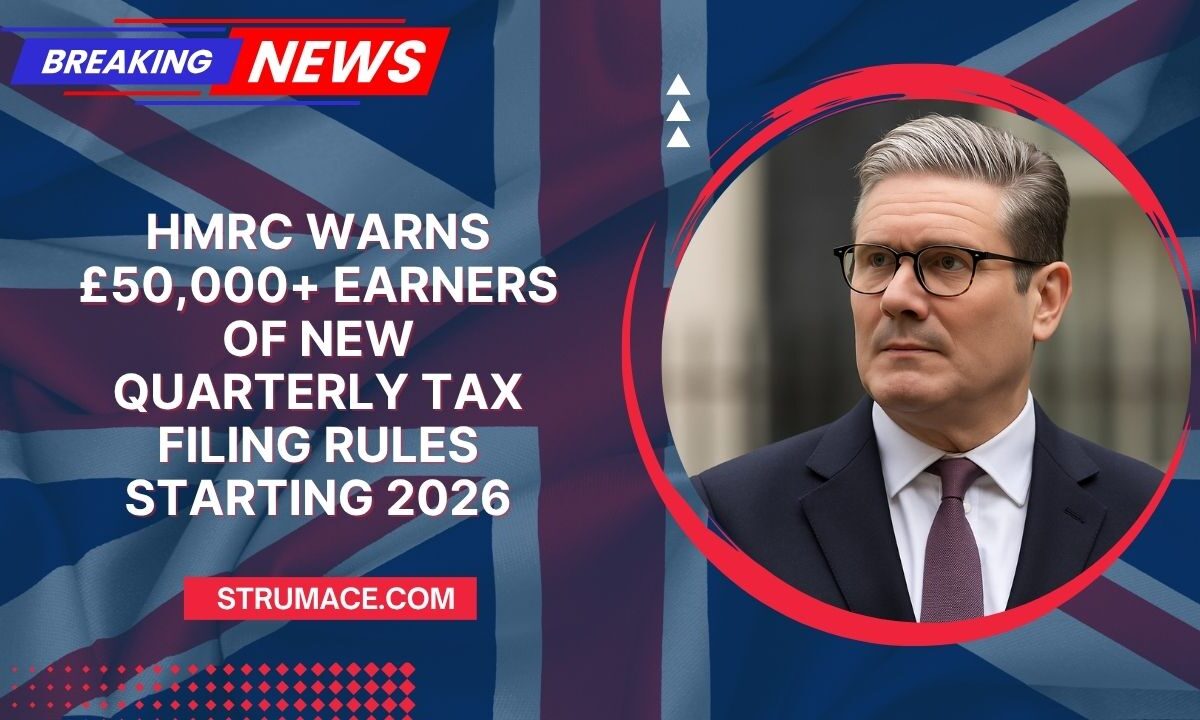HMRC is sending official letters to UK households earning over £50,000 to inform them about a new tax reporting rule that will take effect in April 2026.
The change is part of the Making Tax Digital (MTD) initiative, aimed at modernising the UK’s tax system by moving from annual to quarterly tax filings.
This update will affect around 700,000 households, including self-employed individuals and landlords, who will now be required to submit income and expense reports to HMRC every three months rather than once a year.
What Is Changing Under Making Tax Digital?
Currently, self-employed people and landlords file a Self Assessment tax return annually. Under the new MTD rules, if your qualifying income exceeds £50,000, you must submit quarterly digital updates to HMRC.
| Detail | Information |
|---|---|
| Start Date | 6 April 2026 |
| Income Threshold | Over £50,000 qualifying income |
| First Reporting Period | 6 April – 5 July 2026 |
| First Deadline | 7 August 2026 |
| Frequency of Reports | Every 3 months |
| Penalty for Late Filing | £100 immediate fine, plus daily fines after 3 months |
| Additional Penalties | £300 or 5% of tax owed after 6 and 12 months |
Penalties for Missing Deadlines
The penalties for missing the new quarterly deadlines can be severe:
- £100 fine immediately after missing a filing deadline.
- After 3 months, daily fines of £10 (up to £900).
- After 6 months, a fine of £300 or 5% of the tax owed (whichever is higher).
- After 12 months, the same penalty applies again.
- Late payment of tax will also trigger 5% penalties at 1 month, 6 months, and 12 months, plus interest charges from the date the payment was due.
Why HMRC Is Making the Change
The Making Tax Digital initiative is designed to:
- Improve accuracy by reducing tax reporting errors.
- Ensure taxpayers keep up-to-date digital records.
- Spread the tax reporting workload across the year to reduce the January deadline rush.
HMRC will review Self Assessment returns each year. If your income exceeds the threshold, you will receive a formal letter confirming when you must start using MTD for Income Tax.
For example, if your qualifying income for the 2024–2025 tax year is over £50,000, HMRC will write to you confirming you must start using MTD for Income Tax from 6 April 2026.
How to Prepare for the New Rules
If you fall under the new threshold, preparation is key:
- Start keeping digital records now to make the transition smoother.
- Choose HMRC-approved accounting software for easy quarterly submissions.
- Familiarise yourself with the quarterly deadlines to avoid penalties.
- Work with an accountant to ensure your records meet MTD requirements.
The HMRC’s move to quarterly tax reporting marks a major shift for high earners in the UK. For those earning over £50,000, this will mean adjusting to a more frequent reporting schedule, starting in April 2026.
By preparing early, keeping digital records, and understanding the penalties for late filing, you can stay compliant and avoid unnecessary fines.
This change under Making Tax Digital is set to make tax reporting more efficient, but it also demands better organisation from taxpayers. Those affected should act now to ensure they are ready for the transition.
FAQs
Who will be affected by the new MTD quarterly filing rule?
Self-employed individuals and landlords with qualifying income over £50,000 will need to file digital tax updates every three months.
When will the new rule come into effect?
The new quarterly filing requirement starts on 6 April 2026.
What happens if I miss a quarterly filing deadline?
You’ll face a £100 fine, escalating daily penalties after three months, and additional fines after six and twelve months.
